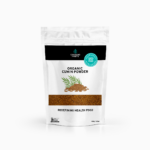The headline is a no brainer, as if we ever really thought that they were healthy. But what really astounds me is that the so called “authorities” are still harping on about the fat salt and sugar content. What about the additives, presevatives, flavourings, colours and fake foods, surely we need to look at them a lot more closely in light of new evidence on the of cause inflammation of the blood vessels and its link to heart disease. For more info read my cholesterol and heart disease report available free for a limited time on Changing Habits
MEALS offered by fast-food chains as healthy options are still steeped in salt, fat and sugar, the most comprehensive analysis of fast food in Australia has found.
Public health experts yesterday said the research reinforced calls for a junk-food tax, with research also showing a tax would be more effective than promoting healthy eating and exercise.
Less than half the salads available from fast-food outlets were low-fat and there was a twentyfold variation in sugar and fat between salads, according to the study of nutritional information from about 90 per cent of Australian fast-food outlets.
Not a single sandwich was low-salt, and on average they contained nearly 2.5 grams – almost half the recommended maximum daily intake of six grams. This combined with an average of nearly 15 grams of fat.
Elizabeth Dunford, the study leader and researcher with The George Institute for Global Health, said people often viewed sandwiches as healthy.
”Consumers don’t know at a glance if a sandwich is healthier than a burger, [but] they are going to assume the sandwich is healthier,” she said. ”But bread is a major contributor to sodium and with processed cheese and meat, it is no surprise they are high in salt.”
Breakfasts were some of the worst offenders. No company provided a low-salt option and, on average, breakfasts had the highest levels of sugar and saturated fat.
The average Australian eats out four times a week and there are 17,000 fast-food outlets in the country, according to the research, published in the journal Appetite.
Varying portion sizes at fast-food outlets can cause unintended fat, sugar and salt consumption. Some burgers were more than one portion and pizza was often calculated by the slice.
”No one is going to eat half a burger or one slice of pizza,” Ms Dunford said.
Outlets should gradually reformulate meals so all had lower levels of so-called ”negative nutrients”.
”If you just cut them by 50 per cent, consumers are not going to like the change,” she said. ”But if all fast-food outlets reduce sodium content by 10 per cent, that would make a massive difference.”
Public Health Association of Australia president Mike Daube said regulation was needed. ”Reducing salt can make a huge difference but it has got to be backed up by regulated targets,” he said.
A senior policy adviser for the Obesity Policy Coalition, Jane Martin, said unhealthy foods should have a 10 per cent tax.
The Assessing Cost Effectiveness of Prevention report, released yesterday after five years of research by the University of Queensland and Deakin University, found such a tax would be more cost-effective than other strategies.
”We know that other public health problems such as tobacco have been influenced by taxation.”
Click here to view article
Source: The Age, Amy Corderoy 9th Sep 2010








0 Comments